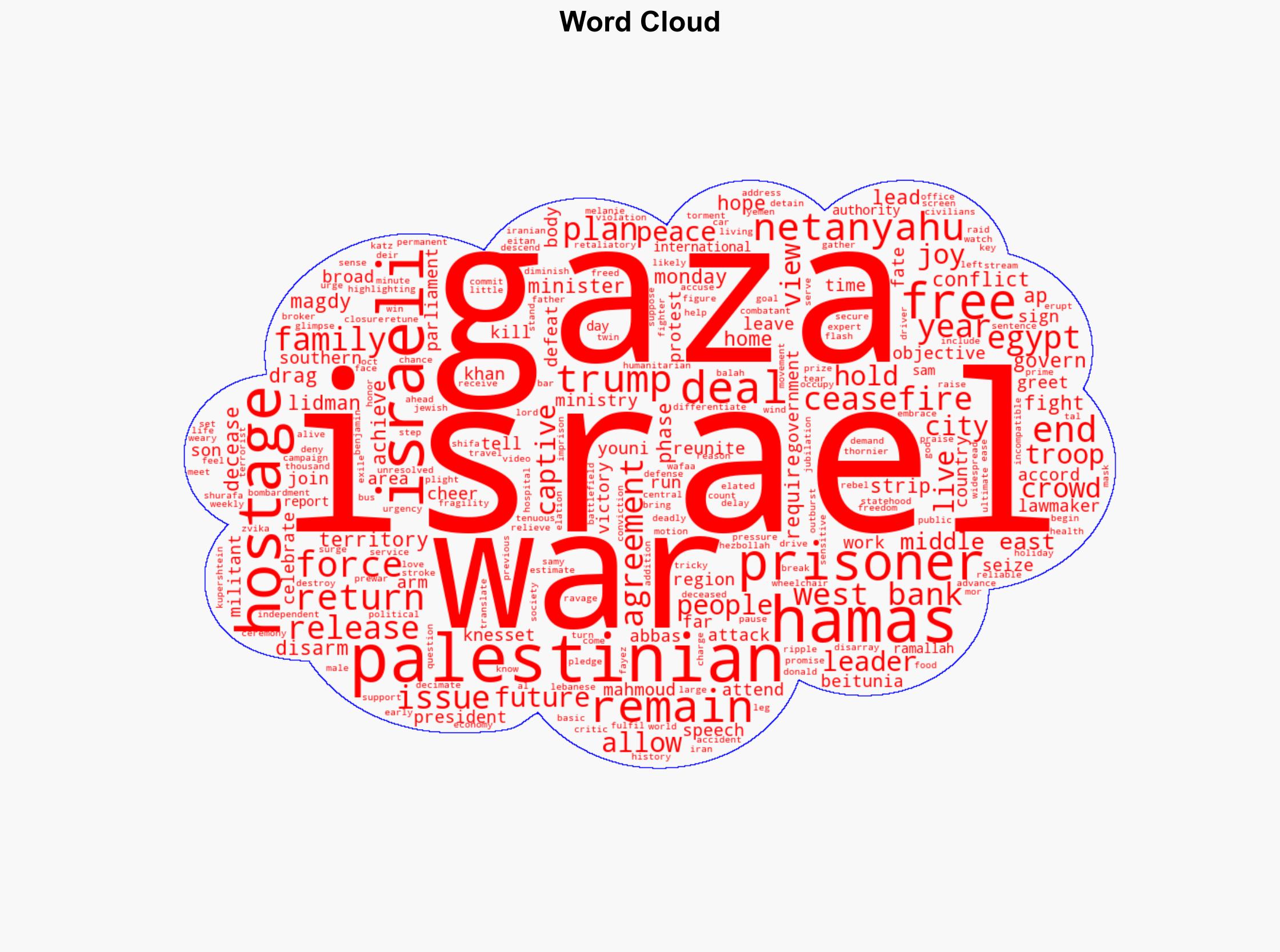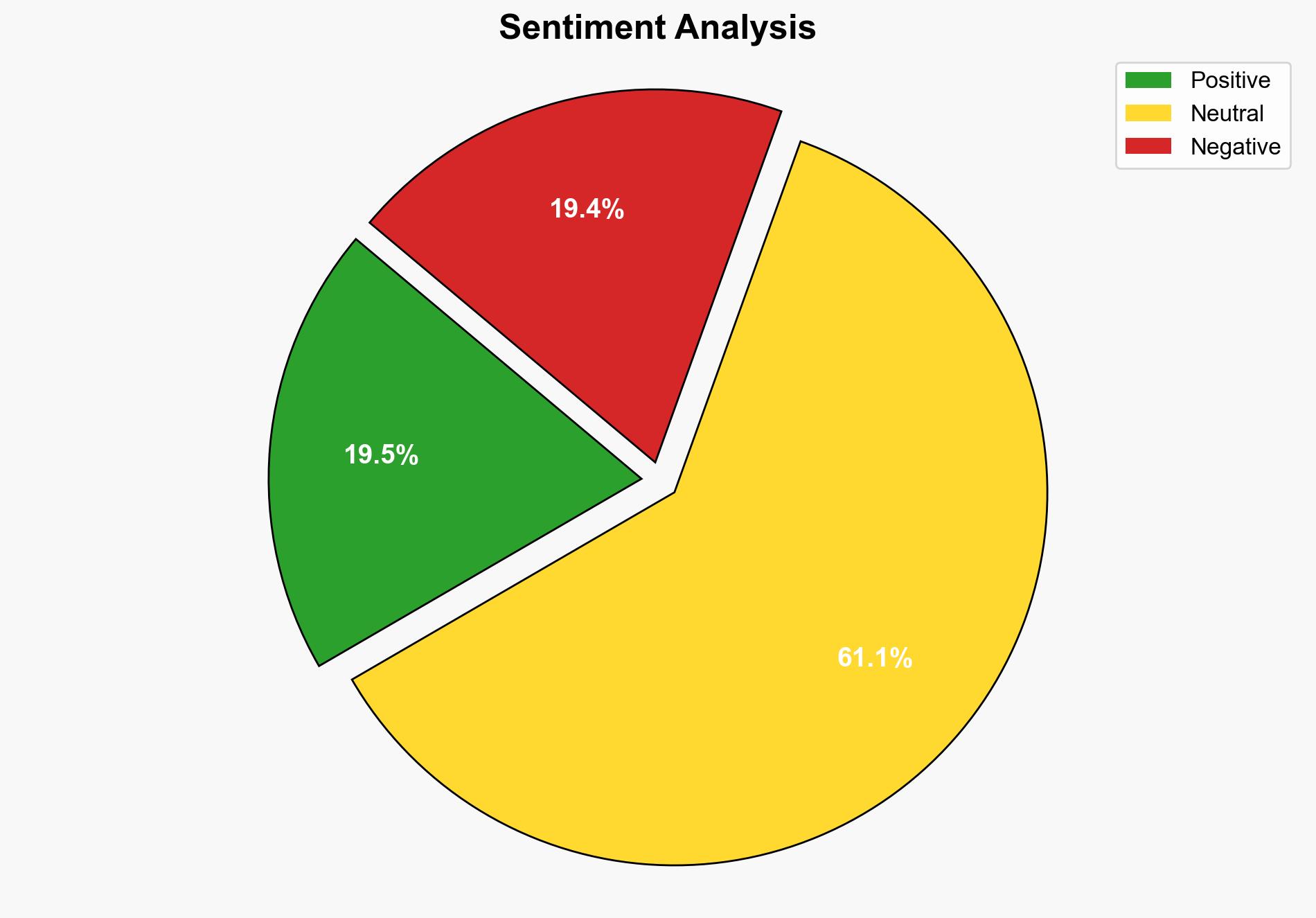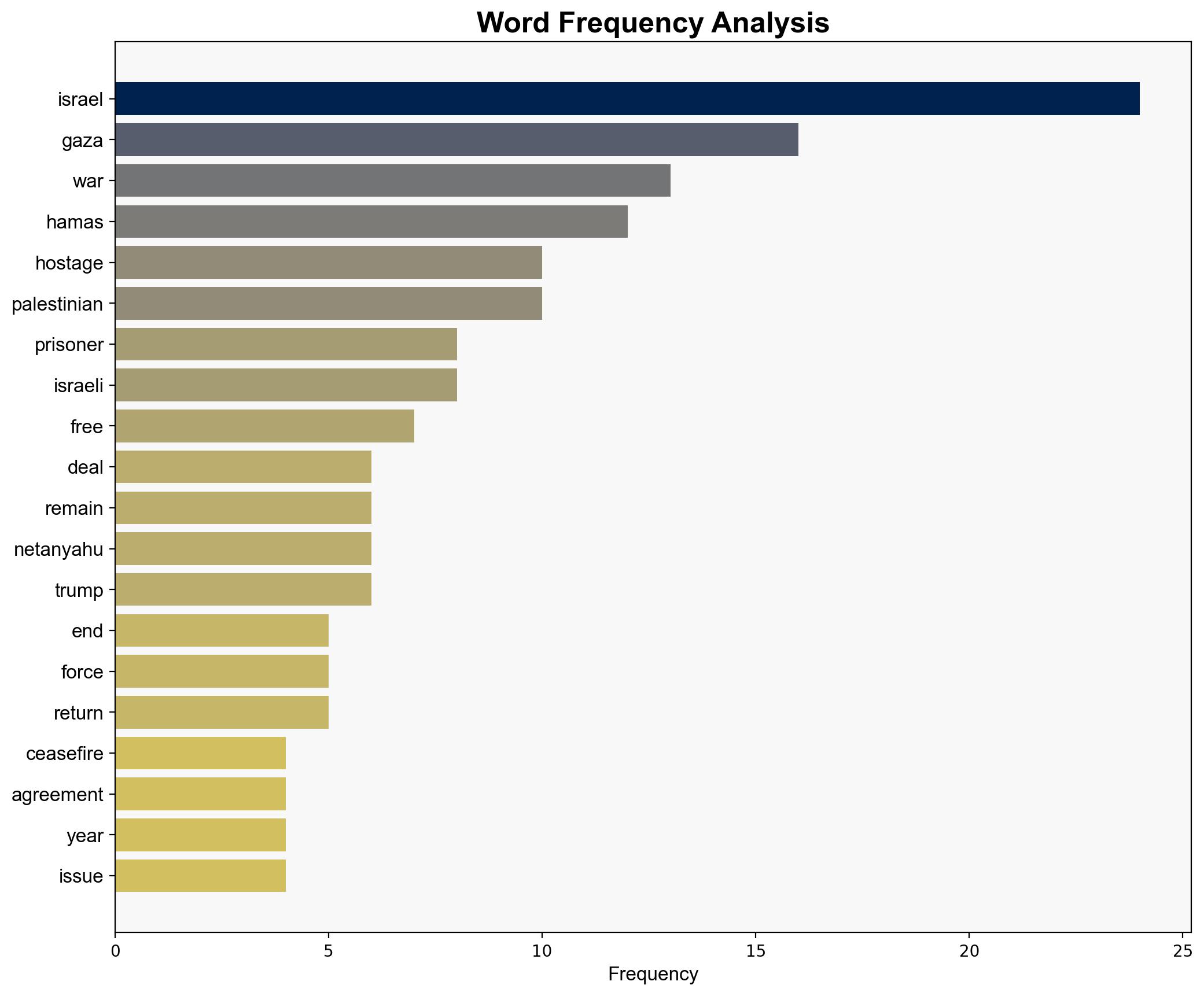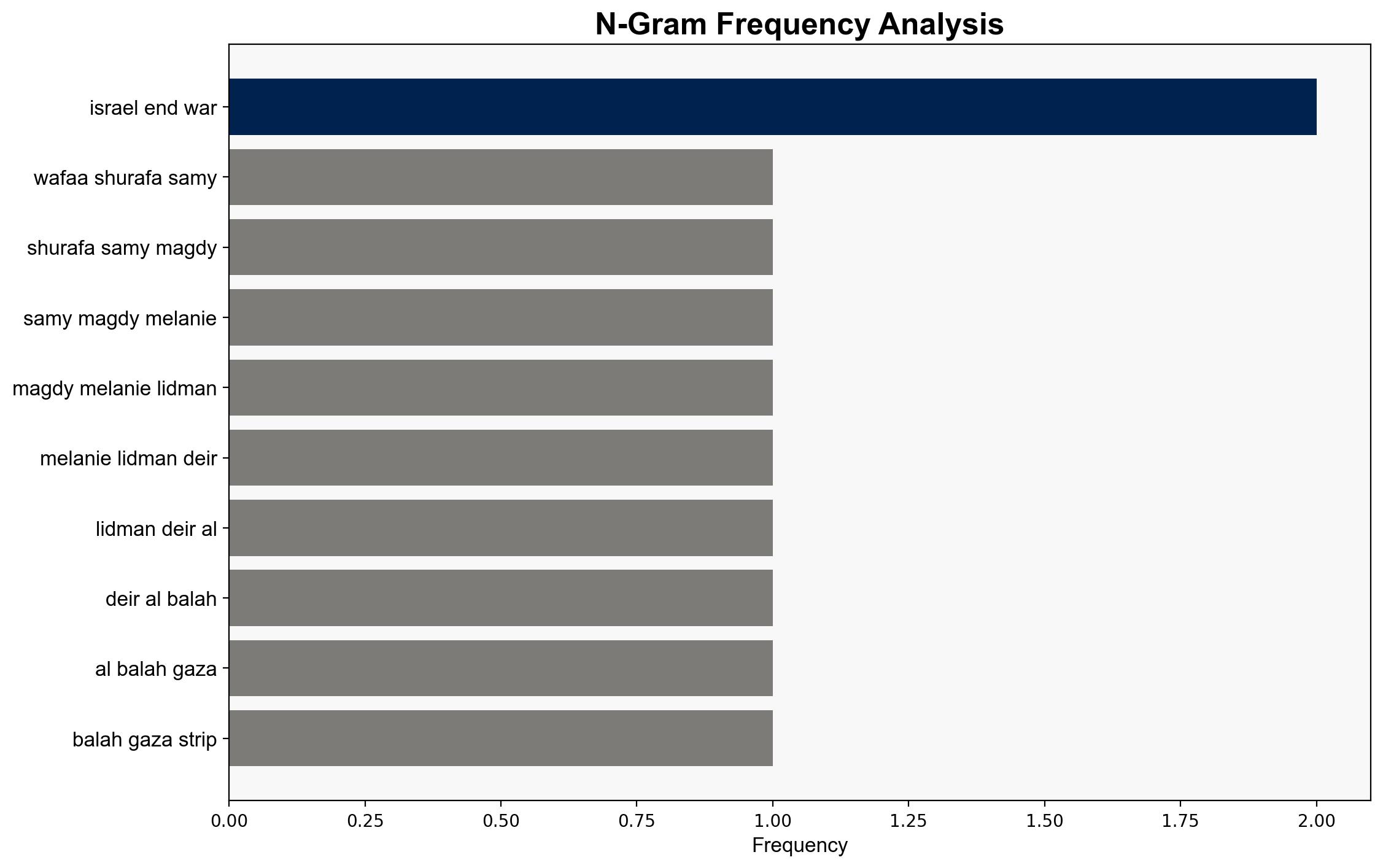Red Cross buses carrying Palestinian prisoners being freed as part of exchange begin leaving prison – Boston Herald
Published on: 2025-10-13
Intelligence Report: Red Cross buses carrying Palestinian prisoners being freed as part of exchange begin leaving prison – Boston Herald
1. BLUF (Bottom Line Up Front)
The most supported hypothesis is that the prisoner exchange is a strategic maneuver by both Israel and Hamas to temporarily de-escalate tensions and gain political leverage, rather than a step towards a lasting peace agreement. Confidence Level: Moderate. Recommended action is to closely monitor subsequent political and military developments for signs of either renewed conflict or genuine peace negotiations.
2. Competing Hypotheses
1. **Hypothesis A**: The prisoner exchange is a genuine step towards a lasting peace agreement between Israel and Hamas, facilitated by international mediation.
– **Supporting Evidence**: The exchange is part of a ceasefire agreement, with international leaders involved in the process, suggesting a coordinated effort towards peace.
– **Contradictory Evidence**: The underlying issues of Hamas disarmament and Palestinian statehood remain unresolved, indicating fragility in the agreement.
2. **Hypothesis B**: The exchange is a tactical move by both parties to gain political leverage and temporarily de-escalate tensions without addressing core issues.
– **Supporting Evidence**: The exchange provides immediate political gains for both sides—Israel achieves the return of hostages, and Hamas gains the release of prisoners, boosting their respective domestic standings.
– **Contradictory Evidence**: The involvement of international leaders and the structured nature of the exchange could suggest a more strategic, long-term peace effort.
3. Key Assumptions and Red Flags
– **Assumptions**: Both hypotheses assume that the parties involved are acting rationally and with a clear strategic objective. There’s an assumption that international mediation is effective in this context.
– **Red Flags**: The lack of resolution on key issues such as Hamas disarmament and Palestinian statehood is a significant red flag. Additionally, the potential for internal political pressures within Israel and Hamas to derail the process is a concern.
– **Blind Spots**: The potential influence of external actors such as Iran or Hezbollah is not fully addressed in the intelligence.
4. Implications and Strategic Risks
– **Geopolitical Risks**: The exchange could lead to a temporary reduction in hostilities but may also embolden hardliners on both sides, increasing the risk of future conflict.
– **Economic Implications**: Continued instability could further damage the already fragile economies of both Israel and Gaza.
– **Psychological Impact**: The release of prisoners and hostages may temporarily boost morale but could also lead to increased polarization and radicalization.
5. Recommendations and Outlook
- Monitor political rhetoric and military movements closely to detect early signs of either renewed conflict or genuine peace efforts.
- Engage in diplomatic efforts to address unresolved issues such as Hamas disarmament and Palestinian statehood.
- Scenario Projections:
– **Best Case**: The exchange leads to sustained negotiations and a comprehensive peace agreement.
– **Worst Case**: The exchange collapses, leading to renewed hostilities and regional instability.
– **Most Likely**: A temporary de-escalation followed by a return to the status quo, with sporadic violence.
6. Key Individuals and Entities
– Benjamin Netanyahu
– Donald Trump
– Mahmoud Fayez
– Zvika Mor
– Eitan Mor
– Bar Kupershtein
– Tal Kupershtein
7. Thematic Tags
national security threats, regional focus, conflict resolution, Middle East peace process





